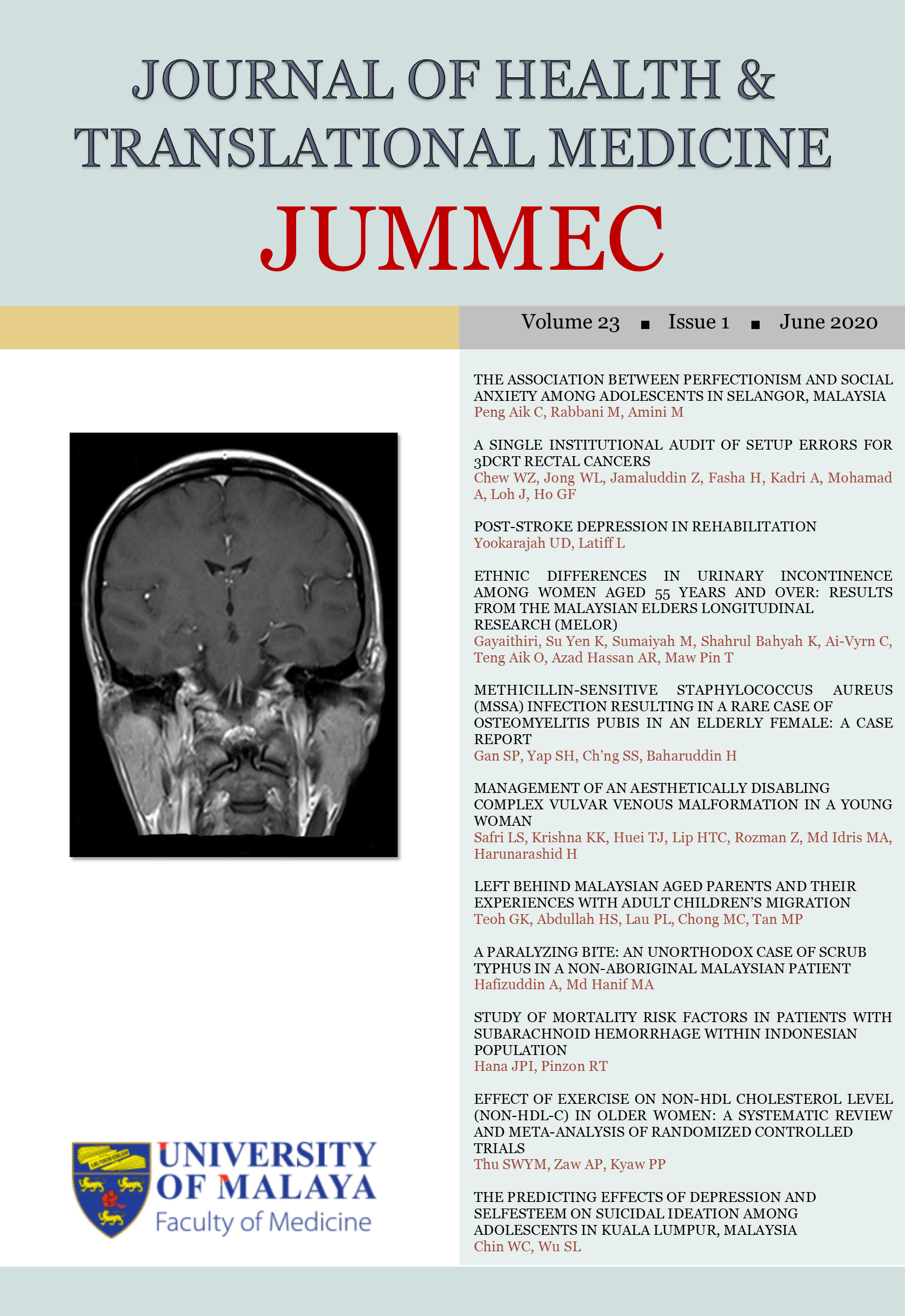THE PREDICTING EFFECTS OF DEPRESSION AND SELFESTEEM ON SUICIDAL IDEATION AMONG ADOLESCENTS IN KUALA LUMPUR, MALAYSIA
Received 2019-10-10; Accepted 2020-01-06; Published 2020-04-17
DOI:
https://doi.org/10.22452/jummec.vol23no1.11Keywords:
adolescence, depression, self-esteem, suicidal ideationAbstract
Background: In Malaysia, the prevalence of adolescents’ suicidal ideation has increased over the years. Therefore, it is crucial to investigate the predictors of suicidal ideation among adolescents. Hence, the aim of this study was to examine the predicting effects of depression and self-esteem on suicidal ideation among Malaysian adolescents. In addition, the relationships between depression, self-esteem, and adolescents’ suicidal ideation were explored as well.
Methods: By using a multistage cluster sampling method, a cross-sectional study was conducted in secondary schools in Kuala Lumpur, Malaysia. The participants were comprised of 852 adolescents (51% males and 49% females) aged 13-17 years old who completed self-administered questionnaires. Pearson’s Correlation analysis was used to analyse the relationships among depression, self-esteem, and adolescents’ suicidal ideation, while Standard Multiple Regression analysis was used to examine the predicting effects of depression and self-esteem on adolescents’ suicidal ideation.
Results: Depression had a positive correlation with adolescents’ suicidal ideation (r = .290, p < .001), while self-esteem had a negative correlation with adolescents’ suicidal ideation (r = -.283, p < .001). Results also showed that both depression (β = .200, p < .001) and self-esteem (β = -.186, p < .001) significantly predicted adolescents’ suicidal ideation.
Conclusion: The study found that depression is a risk factor, while self-esteem is a protective factor of adolescents’ suicidal ideation.
Downloads
Downloads
Published
Issue
Section
License
All authors agree that the article, if editorially accepted for publication, shall be licensed under the Creative Commons Attribution License 4.0 to allow others to freely access, copy and use research provided the author is correctly attributed, unless otherwise stated. All articles are available online without charge or other barriers to access. However, anyone wishing to reproduce large quantities of an article (250+) should inform the publisher. Any opinion expressed in the articles are those of the authors and do not reflect that of the University of Malaya, 50603 Kuala Lumpur, Malaysia.


